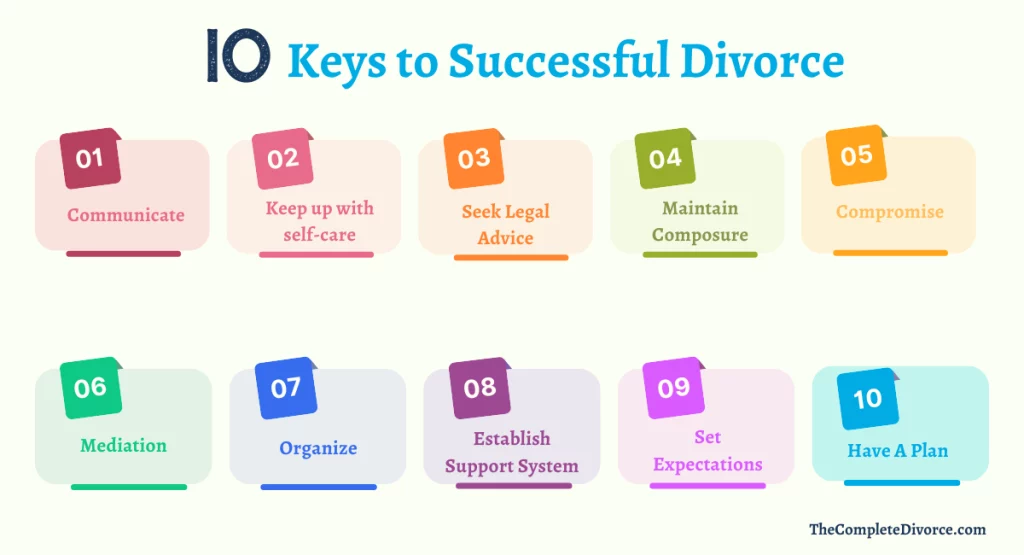
Share
Spousal Support Options in California

Dina Haddad
Founder & Attorney Mediator
I’m Dina Haddad, a family law attorney-mediator in California. I’m so tired of couples not having a process that’s easy to complete their divorce. They are getting lost, wasting time and money, and beyond frustrated with their results.That’s why I created TheCompleteDivorce. I took my successful mediation practice and condensed it into an affordable and winning program.
Whether you want to support or not, you must address spousal support for both of you in the divorce agreement. You have four options; you can receive support; you can waive support; you can reserve the issue for later; or you can do a buy-out. Whichever option you choose, it might not be the same option as your spouse.
Receiving Support: Ensure Clarity in Your Agreement
The first option is to receive support. If you are going to receive support, make sure to include details in your agreement; the exact amount, the time it will be paid, whether the support amount will change over time, and when support will end.
Waiving Spousal Support: Irrevocable Choice
The second option is to waive spousal support. If you waive spousal support, you can never receive spousal support from your spouse no matter how bad your financial situation. The waiver is final and permanent. Make sure the waiver is written clearly in your agreement.
Reserving Jurisdiction: Flexibility for Future Needs
The third option is to reserve the court’s jurisdiction, or power, to award spousal support to you in the future. You might choose this option if you decide not to receive support, but you want the right to request it in the future should your situation change. This doesn’t mean you’ll get support, but only that you have the right to ask for it later, unlike with a waiver of support. You may want to include a date when this option expires and your spouse can no longer request support.
Buy-Out Option: Lump Sum Solution
The final option is a buy-out. Instead of having support paid over time, the supporting spouse pays the supported spouse the value of support in a lump payment. This becomes part of the asset division and is non-taxable. In exchange, both parties waive spousal support. The buy-out offers finality but requires you to have the money available to pay it. The buy-out is only available by agreement. The judge cannot order a buy-out.
Navigating the Buy-Out's Risk
A buy-out is very risky. You must assume the amount of support and length of time it will be paid, but you can’t know for sure if you’ll keep your job, get a better-paying job, or if the supported spouse will remarry.
Negotiation Strategies: Transforming Conflict into Resolution
You can better protect yourself by converting these risks to a dollar amount, either to increase or decrease the buy-out amount. It still doesn’t guarantee the right amount but might get the buyout to a more realistic number. If this option is of interest to you, this is definitely a situation to speak with a divorce professional to walk you through the pros and cons as it applies to your case.
Negotiating spousal support can lead to a number of conflicts. It forces couples to deal with issues like how much each spouse should be earning or spending. If money was an issue while married, the spousal support conversation makes it worse. If you want to avoid a fight, be creative. Don’t focus just on how much is paid or for how long. Look for ways to address both of your concerns, whether it’s to include review periods, caps on total support paid, step-downs, a plan for the supported spouse to become self-supporting, or address retirement concerns. Including these details will reduce conflict, provide you with more certainty, and guide any future discussions.
Empower Your Divorce Journey with The Complete Divorce
Embark on a successful DIY divorce in California with TheCompleteDivorce. Access essential family law court forms, instructional video tutorials, and an automated customizable Marital Settlement Agreement through our online platform. For comprehensive assistance, our package includes dedicated time with a divorce mediator.
Join the ranks of satisfied couples who’ve benefited from our 5-star services. Our guided DIY divorce is not only successful but also remarkably affordable.






